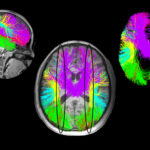Can we explain sudden infant deaths? It’s complicated.

Since the early 1990s, “Back to Sleep” campaigns have urged parents to place infants to bed on their backs to prevent suffocation and sudden infant death syndrome (SIDS). The results were clear: from 1992 to 1996, SIDS fell by more than half.
But since then, rates of what is now called sudden unexpected infant death (SUID) have held steady, even with additional recommendations to remove suffocation hazards such as bumpers, loose blankets, and other soft bedding. To better understand what causes these devastating deaths, a study this month in Pediatrics reviewed more than 12,000 cases of SUID gathered by the Centers for Disease Control and Prevention from 2011 to 2017.
We caught up with Dr. Richard Goldstein to discuss the findings. Dr. Goldstein directs Robert’s Program at Boston Children’s Hospital, which seeks answers for families who have lost a child suddenly, without apparent cause. The program also provides bereavement counseling.
What did the new study find?
About 1 in 5 cases in the SUID registry (18 percent) were classified as being explained by suffocation (obstructed breathing). Another 13 percent were classified as unexplained but possibly caused by suffocation.
Combining these two groups, the study attributed the likely or possible suffocation cases to:
- Soft bedding (74 percent)
- A co-sleeping family member rolling on top of or against the baby (20 percent)
- The baby being wedged between objects, such as the mattress and the side of the crib (7 percent).
But to put this in perspective, 82 percent of cases in the registry overall were unexplained, including the possible suffocation cases. A quarter of the unexplained cases lacked enough information to make a determination.
Were there limitations to the study?
The study relied on autopsies and mandatory investigations conducted by state medical examiners. These investigations face many challenges. SUID typically is not witnessed, and there often is no physical evidence to show suffocation. Medical examiners often lack the resources to conduct deeper investigations or detailed medical testing.
Different medical examiners may also use different approaches to classification: One might call a death an “accidental suffocation,” while another might conclude the cause is undetermined. One strength of the study is that it did attempt to assess the available information consistently.
Finally, while infants dying from SUID commonly slept with soft bedding, the study doesn’t tell us what percentage of American babies not dying from SUID sleep in similar environments.
What messages should parents take away from this study?
Until your baby is 1 year old…
- Place your baby on their back during naps and at bedtime.
- Use a firm and flat sleep surface in a crib or bassinet.
- Remove bumpers, soft bedding, stuffed animals, crib pads, and toys from the sleep area.
- Share your room, but not your bed.
- Never dress your baby too warmly; keep room temperature comfortable for an adult.
- Never use loose blankets; dress your baby in a sleep sack or pajamas.
- Avoid pacifiers with attached strings or stuffed animals. Never smoke around your baby.
First is that many parents are putting their infant to sleep with soft items that pose a suffocation hazard, against current advice. More than 72 percent of all SUID cases occurred in sleep circumstances that were considered unsafe, whether or not the actual cause of death could be explained.
Parents love to create a cozy nursery for their little ones, and many stores continue to sell colorful bumpers and other soft items for the crib. But the recommended environment for safe sleep has a tight-fitting mattress, with no bumpers, blankets, pillows, pads, or stuffed animals.
The study also suggests that we need to more closely investigate SUID. Many babies in this study had no findings in their sleep environment that would account for suffocation. Our research at Boston Children’s indicates that underlying biological factors can make babies vulnerable to SUID.
What does Boston Children’s research suggest about SUID?
We have found evidence that about 40 percent of infants who die from SUID have epilepsy-related brain findings. About 30 percent have serotonin abnormalities that may have impaired their brainstem’s ability to regulate breathing and heart rate. We are also finding significant evidence for genetic differences. One of our goals is to identify biomarkers of suffocation or asphyxia or indicators of risk factors that could be picked up through a simple blood test.
In Robert’s Program, we investigate SUID the same way we investigate any rare, unexplained disease. We perform advanced imaging of tissue samples and as well as DNA testing, comparing the genetic results with samples from the parents. Specialists from around the hospital — including experts in neurology, cardiology, and genetics — help us interpret the findings. If we find an underlying genetic vulnerability, we offer genetic counseling to help parents understand whether their other children, or future children, are at risk.
Reassuring families and helping them cope with their loss is an important part of this work. Regardless of the circumstances, parents will blame themselves for their child’s death for the rest of their lives and wonder if there’s anything they could have done. Unfortunately, there tends to be a culture of blaming parents for SUID. Low-income families and families of color are often poorly treated during investigations. We hope to see that change as the science advances.
Learn more about Robert’s Program
Related Posts :
-

Parsing the promise of inosine for neurogenic bladder
Spinal cord damage — whether from traumatic injury or conditions such as spina bifida — can have a profound impact on bladder ...
-

Unveiling the hidden impact of moyamoya disease: Brain injury without symptoms
Moyamoya disease — a rare, progressive condition that narrows the brain’s blood vessels — leads to an increased risk of stroke ...
-

Forecasting the future for childhood cancer survivors
Children are much more likely to survive cancer today than 50 years ago. Unfortunately, as adults, many of them develop cardiovascular ...
-

Genomic sequencing transforms a life: Asa’s story
Asa Cibelli feels like he’s been reborn. The straight-A middle schooler plays basketball and football, does jiu jitsu, is ...





